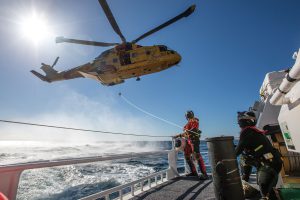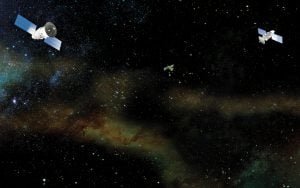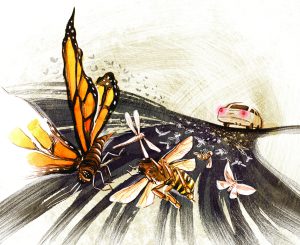
People & Culture
Safety first, service always: The Canadian Coast Guard turns 60
A celebration of the Canadian Coast Guard’s renowned search-and-rescue capabilities — and more — as the special operating agency turns 60
- 4392 words
- 18 minutes
This article is over 5 years old and may contain outdated information.
Science & Tech

A biologist and physicist from the University of Western Ontario have teamed up to develop a new CT scanning technique that allows scientists to see the internal organs of insects—while they’re still alive. Previously, live insects were too squirmy to be put in a CT scanner and imaging would have required using already dead or euthanized insects.
“We put our thoughts together and we were wowed the first time we saw the image,” says Dr. Danny Poinapen, a biophysicist at the micro-CT lab at Robarts Research Institute who co-developed the method.
The newly developed procedure involves giving insects a steady stream of carbon dioxide to knock them out. Once immobilized, they are placed in a micro-CT scanner. Computer software then takes the x-ray data to produce highly detailed 3D images and video. The process does not incur any physical damage to the insects and can be done repeatedly, allowing researchers to study physiological changes over time with the same individual.
Insects are usually anesthetized for between three and seven hours and need 24 hours to recover, so if necessary, researchers could perform scans every other day. “This is a really great tool that helps us visualize processes that we normally can’t take a look at,” says Joanna Konopka, a PhD candidate in insect biology.
The technique can be broadly applied to a variety of different studies, for example researching how a pesticide might affect insects internally, or how diseases like malaria or Lyme disease fester within an insect. “We would really welcome people in the scientific community to use it for this kind of purpose,” says Poinapen.
The detailed images can also be useful in educating both the public and academics. “Nothing compares to seeing insects in 3D the way that we’re able to see them,” says Konopka. “This is an amazing educational tool.”
The researchers also noted that this kind of achievement would have been impossible without integrating the fields of insect biology and x-ray imaging. “It’s a win-win situation” says Konopka “We’ve come up with something that we couldn’t have come up with on our own.” The team’s interdisciplinary work was published in BioMed Central.
Are you passionate about Canadian geography?
You can support Canadian Geographic in 3 ways:

People & Culture
A celebration of the Canadian Coast Guard’s renowned search-and-rescue capabilities — and more — as the special operating agency turns 60

Science & Tech
As geotracking technology on our smartphones becomes ever more sophisticated, we’re just beginning to grasps its capabilities (and possible pitfalls)

Exploration
The men and women that have become part of Canada’s space team

Wildlife
Insects are by far the most populous species on the planet, but they seem to be disappearing. Why aren’t more people concerned?